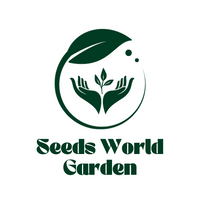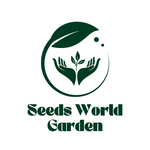Quantity: 100+ Seeds
Color: As picture
Free Shipping and Buy 2 Get 1 Free
1. Seeds are small, vital components of plants that are essential for the growth and development of new life. They are typically small, hard, and often have a protective coating around them. Seeds contain the genetic information of the parent plant, and when planted, they can create new plants that are identical to the parent.
2. There are many types of seeds, including annuals, perennials, vegetables, fruits, and grains. Each type of seed has different requirements for optimum germination and growth. Many seeds require a moist environment, adequate temperature, and light for them to germinate and grow successfully.
3. Seeds can be harvested from plants or purchased from a store. In addition to providing nutrition, many seeds can also be used as a decoration or for craft projects. Seeds can also be used to propagate plants, creating a new generation of plants identical to the original.
4. It is important to select the right seed for the desired purpose. Some seeds require special treatment, such as stratification or scarification, before they can be planted. The packaging of the seeds should also provide helpful information for the best planting and care instructions.
5. By planting and caring for seeds, gardeners and farmers can bring new life to the world. Seeds are an essential part of the food chain, providing the nutrition needed for animals, insects, and humans alike. Seeds can also be used to create beautiful landscapes and gardens, adding beauty and diversity to the environment.
How to Grow Your :
1. Soak in water for 24 to 48 hours before you t them. This allows moisture to penetrate the coat and leads to swelling of the ’s parts to spur germination.
2. Find a location with well-drained, organic-rich, sandy or silt loam and with a minimum average temperature of about 60 degrees Fahrenheit during the t’s early growth. The most favorable temperature range is between 75 to 80 degrees. The t should ideally receive six hours of sun per.
3. Till the soil to rid it of weeds and to increase air circulation. Apply compost to the soil after tilling.
4. Place two or three in a hole about ½ to 1 inch deep in the soil along a fence or under a 6-foot-tall trellis form. The holes should be 15 to 23 inches apart and rows 3 to 5 feet apart.You can also start in small plastic pots in a commercial soil mix.
Shipping:
All orders Free Shipping and Buy 2 Get 1 Free. Normally North American delivery time will take 7-14 days (shipping delays due to large orders will add 1-3 weeks depending on time). Other areas please wait 14-28 days for the order to arrive.
RETURN POLICY
We have a 30-day return policy, which means you have 30 days after receiving your item to request a return.


